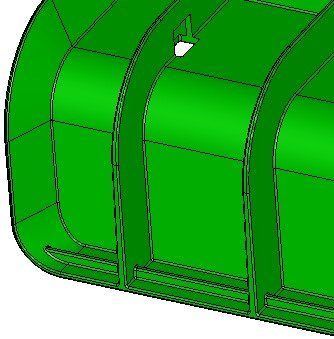Stiffness refers to the resistance of a body to deformation by an external load (e.g. a force). In this context, the load can also occur, for example, through a moment, such as a torsional and bending moment. This process in turn depends on the load in question. For this reason, a distinction is made between extensional, bending, shear and torsional stiffness. The optimization of the stiffness makes components above all more resistant and durable (fatigue strength).
What does the stiffness depend on ?
It depends primarily on the material properties. In addition, the geometry of the workpiece, but also the type of processing play an essential role. Stiffness is a mechanical parameter and applies in a linear-elastic environment. This means that the optimization stiffness only applies to small deformations. By relative stiffness we mean that which applies to slender bodies lengthwise. The reciprocal is also called compliance. The absolute stiffness is called tensor.

What is the difference between stiffness and strength ?
The strength is the measure of the maximum resistance stress during plastic deformation. In the case of complicated geometries, it is often not possible to distinguish precisely between the individual types of load. In the case of a helix, for example, a tensile load can also lead to torsion. In this case, the stiffness optimization is mainly based on computational methods, such as the finite element method.
When do load deformations come into play ?
In the production of components which are later subjected to high loads or which must fit precisely, the slightest inaccuracy or stiffness deformation can render the component unusable. This happens primarily in mechanical engineering, but also in plastics manufacturing. 3D parts are created on the computer and only printed out with the 3D printer. Since this process is practical, simple and fast, but very expensive, the printed parts must also be 100 % usable.
How can the stiffness be optimized ?
Depending on the type of stiffness to be improved, different calculation formulas are available. The optimization of the stiffness depends on many different factors. Additives, fillers or the material mix can usually improve the stiffness quickly. However, it is mainly optimized via the formulas.
If, on the other hand, new polymer materials are to be developed, the material must be very tough and stiff so that it can be further processed and/or used. Therefore, both soft and rigid fillers are incorporated into a polymer matrix. The result is called a ternary material system and shows significantly improved toughness/stiffness characteristics. Stiffness optimization also depends on the dispersion and adhesion of the fillers in the matrix. This in turn depends on the good compability and processability of the fillers.
On these pages you will also learn how you can accelerate your product development process with the help of stiffness optimization.
Are you curious ?
Inform yourself about our complete range of services and contact us !